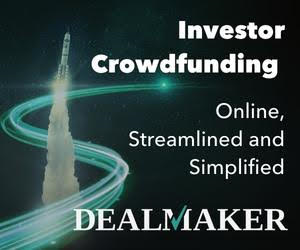Much attention has focused on recent Reg A deals (Arcimoto, Shiftpixy, Chicken Soup for the Soul Entertainment, Myomo and Adomani) that have listed on national exchanges (Nasdaq and NYSE). But the question remains, is this the right move for small-caps seeking to become public companies through innovative capital raising frameworks? After the excitement of ringing a bell has worn off, the visibility has dissipated, the bankers have been paid and the festivities come to a close, a bigger challenge begins for management to grow the value of their business while balancing the resource-intensive requirements of maintaining a listing on a national exchange.
Reg A was designed for small companies, start-ups, entrepreneurial innovators and those seeking to alleviate the cost, time and complexity associated with the traditional IPO process. Part of the larger JOBS Act story, this legislation increased opportunities for transparent and online capital raising whereby small cap companies could embrace technology and the internet to improve sourcing of, and access to capital, ultimately allowing more individual investors to participate.
The benefits of being a publicly-traded company are tremendous: visibility, liquidity, a public valuation, access to capital and the ability to convey the company’s story and reputation to a wider community of stakeholders. However, high costs, time and regulatory burdens associated with executing an IPO on a U.S. stock exchange, and the recurring regulatory complexity of being exchange-listed, may not be the best solution for every company, especially small and micro-cap companies.
A recent blog post by Rod Turner at Manhattan Street Capital provides some topline costs associated with options for going public on an exchange: i.e. a reverse merger– typically $500k to $1mill (for a shell without a bankruptcy in its past) plus marketing costs, and an IPO –typically $1 to $2mill out of pocket plus at least $1mill per year in reporting infrastructure costs. And that’s not taking into consideration the costs of human capital, management’s time and ancillary third-party resources necessary to sustain the listing.
It is natural for advisors and investment bankers to want to introduce small-cap issuers to what they perceive as an easy solution for stock trading. However, getting a quick deal done by prematurely fast-tracking early-stage Reg A companies onto a national exchange, can expose smaller companies to overly-burdensome regulatory and reporting requirements, higher ongoing costs and unnecessary complexity.
When a small company begins trading on an exchange, among more established S&P 500 and Fortune 1000 companies, it needs be equipped and seasoned to handle the responsibilities that listing brings–including the need to automatically meet requirements of an SEC-reporting and exchange-listed company. According to the IPO Task Force, it costs smaller companies $1.5M per year to remain public on a national exchange. These costs create a draw on capital which can quickly negate any additional capital raised.
For any successful endeavor, management time and money in the bank are probably the most critical assets, vital to growing the business over the long-term. It is clear that a resource and revenue-intense exchange listing will place significant strain on a company’s ability to manage and fund a growing business in the long path to becoming profitable — and listing too soon can prove most detrimental to shareholder value.
And, so what has happened? We’ve seen a pipeline of deals that are essentially IPOs dressed up in Reg A clothing. There is still a focus on institutional investors that falls short, some discounted shares to PIPES players, and only a few shares actually sold online. The deal driven bankers still charge IPO rates and run the deals like an IPO — and work the phones to their preferred fast money accounts looking for the first day pop. Of the 5 most recent Reg A exchange listings, after a few explosive first trading days, most now trade below their offer price. After an initial rush of volume and price volatility, they have settled into slower volumes.
Lost in the supercharged deal frenzy is the hard work of building an engaged community of investors that care about a small company’s mission. Reg A can (and will) “democratize finance” by giving more investors access to a process that has been historically reserved for the institutional select few. Importantly, it’s the smaller investors who are typically looking to be long-term investors and share in the future growth and development of the company. They typically do not respond well to hard selling tactics or invest with the intent of “flipping” the stock to turn a quick profit.
At OTC Markets Group, we believe that being public shouldn’t be painful. Public markets offer tremendous benefits for small-cap companies seeking to raise capital and grow their businesses over the long-term; when we appropriately tailor the burdens of being a public company. Fortunately, when leveraged properly, Reg A offers a faster, more efficient, cost-effective and less burdensome path to the public markets. It is one of the fundamentals of the JOBS Act that allows the use of transparency and technology so companies will benefit from innovative online platforms to widen distribution, target long-term investors and lower costs when selling shares.
We receive feedback each day regarding the alleged benefits of high trading volumes for smaller companies. We advise companies seeking to raise capital to be wary of the “fast money” PIPES players and equity line financing schemes telling the big volume story, as many are looking for liquidity to quickly sell out. Of course, engaged long-term investors create less trading volumes. We see this all the time in the strongest community banks where the vast majority of their shareholders consider themselves to be stakeholders.
Long-term investors are clearly less resource intensive. It is no wonder that S&P 500 CEOs spend a huge amount of their time dealing with investors. A public company that turns over 50% of their shares outstanding has to engage and educate five times as many new investors as one that turns over 10%. CEO’s and their management teams need their bandwidth to build their business and swing for the fences, rather than find themselves beholden to short-term stock flippers and dilutive PIPES players.
In its 10th year, our OTCQX Best Market is designed to provide companies the benefit of being public without the burdens and undo complexity associated with an exchange listing. Our data-driven standards let companies use their lighter touch Reg A disclosure rather resource intensive exchange requirements. We established common sense corporate governance standards that are designed to meet the needs of early-stage companies, and are tailor made for companies seeking a Reg A offering. OTCQX is recognized by the SEC as an established public market and by the majority of states for Blue Sky disclosure.
OTC Markets Group continues to champion the need for our public companies to be a competitive source of growth capital. We continue to be a choice market for innovative and entrepreneurial companies seeking efficient capital formation in a public market and leveraging a Reg A offering.
Going public is a choice that requires thoughtful evaluation. The OTCQX Best Market is a solution designed to meet the needs of today’s small-cap issuers and their long-term objectives.
For more insights on small-cap company issuers visit: blog.otcmarkets.com
Register for FREE to comment or continue reading this article. Already registered? Login here.
0


